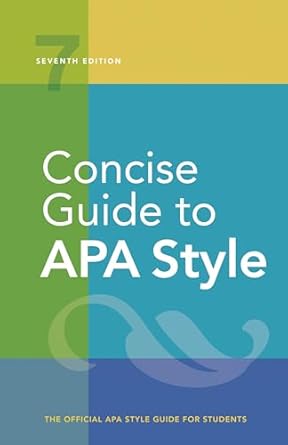[toc]
citing websites a clear guide to reference lists
Concise Guide to APA Style: 7th Edition (OFFICIAL)
Page 236 Review
Navigating the World of References: A Deep Dive into Webpages and Websites
In academic writing, proper referencing is paramount.
It ensures credibility, acknowledges sources, and allows readers to trace information back to its origin.
This ebook excerpt delves into the intricacies of reference lists, particularly focusing on the often-misunderstood category of webpages and websites.
Understanding Reference Categories
The excerpt begins by outlining the broader structure of reference lists, categorizing sources into three main groups: “textual works; audiovisual media; and online media.” Each group is further divided into numbered reference categories.
For textual works, this includes “periodicals, books and reference works, edited book chapters and reference work entries, and dissertations and theses.” The online media group encompasses “social media and webpages and websites.” This hierarchical structure aims to provide a clear framework for classifying diverse source types.
Within each category, different reference types exist.
For example, the periodical category includes “journal articles, magazine articles, newspaper articles, and blog posts,” while the social media category includes “tweets, Facebook posts, and Instagram photos.” This detailed breakdown highlights the need for precision when selecting the appropriate reference type.
The Process of Creating a Reference List Entry
The excerpt provides a step-by-step guide to creating a reference list entry: “first determine the reference group and category and then choose the appropriate reference type within the category and follow that example.” This systematic approach emphasizes the importance of accurately identifying the source’s nature before formatting the reference.
The guide also acknowledges the possibility of encountering sources that don’t perfectly fit existing examples.
In such cases, it advises choosing the most similar group, category, and type, and then adapting the format using the provided templates.
Importantly, the excerpt clarifies that “how a work was accessed or obtained (e.g., online, in print, via interlibrary loan) and how it is formatted (e.g., print, PDF, DVD, online streaming video) have little, if any, impact on the reference list entry.” This distinction emphasizes the focus on the source’s content and nature, rather than its delivery method.
Decoding the Webpages and Websites Category
The excerpt dedicates significant attention to the “webpages and websites” category, acknowledging the confusion it often generates.
The term “website” can refer to both a reference category and a method of retrieval, leading to potential misclassifications.
The excerpt stresses that many types of works can be accessed online, including “articles, books, reports, and data sets,” but only some belong to the webpages and websites category.
Therefore, the key question to ask is: “What type of work is on this website?”
The excerpt then advises users to “choose the reference category in Chapter 10 that is most similar to the work you want to cite and follow the most relevant example.” For instance, “to cite a report from a government website, use the reports category (Section 10.4) and follow the format for a government report (see Chapter 10, Examples 50-52).
Likewise, to cite a webpage from a government website, use the webpages and websites category (Section 10.14) and follow the format for a work ona website (see Chapter 10, Examples 98-102).”
Addressing Common Challenges
The excerpt acknowledges that identifying the author and publication date of webpages and websites can be challenging.
It notes that “the author of a webpage or website may be difficult to determine or may be identified through context (see Section 9.7), and webpages and websites often have unknown dates of publication (see Section 9.17).” These issues highlight the need for careful research and attention to detail when citing online sources.
Conclusion
This ebook excerpt provides valuable guidance on navigating the complexities of reference lists, particularly concerning webpages and websites.
By understanding the hierarchical structure of reference categories, following the step-by-step process for creating entries, and carefully considering the nature of online sources, writers can ensure accurate and credible referencing in their work.
The key takeaway is to prioritize identifying the type of work presented on a website rather than simply classifying it as a website by default.
Buy full ebook for only $18: https://www.lulu.com/shop/american-psychological-association/concise-guide-to-apa-style-7th-edition-official/ebook/product-rmzpq54.html?page=1&pageSize=4
Citing Websites A Clear Guide To Reference Lists
Read more: Copyright & Permissions Guide for Academic Writing

